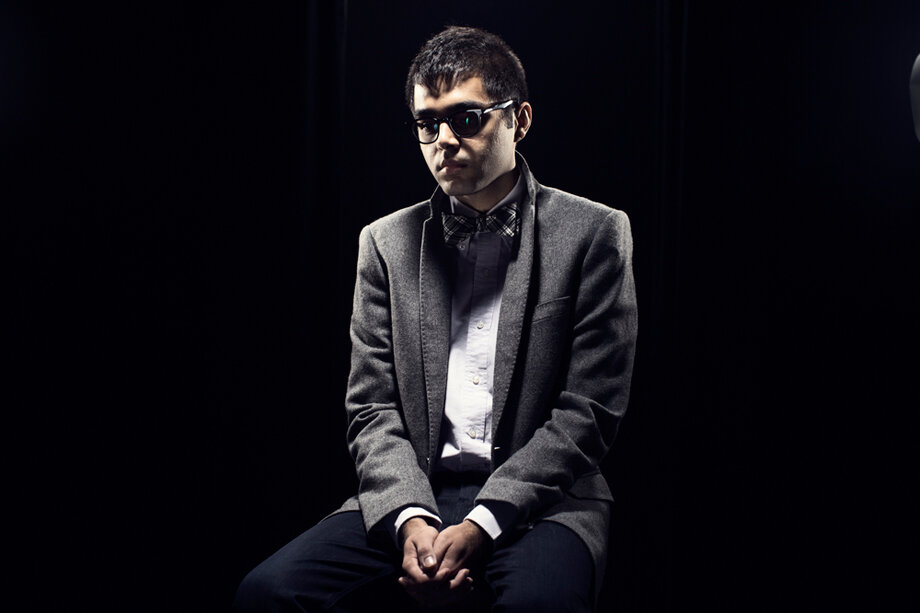Rafiq Bhatia Speaks
In the words of the esteemed drummer Billy Hart, Rafiq Bhatia’s music holds “the true potential of the future.” The GRAMMY-nominated pianist-composer and longtime Jazz Gallery artist Vijay Iyer adds, “his music is innovative and fearless.” Valgeir Sigurðsson, a producer known for his collaborations with artists like Björk and Radiohead frontman Thom Yorke, remarks that working with Rafiq “felt like learning a new language.”Since moving to Brooklyn in 2010, Rafiq “has wasted no time grabbing wider attention” (Time Out New York). He's been busy documenting and performing his music with a breadth of artists including Hart, Iyer, Sigurðsson, High Priest (of Antipop Consortium), The International Contemporary Ensemble (ICE), and Shahzad Ismaily, among others, and has been lending his guitar playing to the bands of Gordon Voidwell and Tecla.We met Rafiq soon after he arrived here, and are pleased to present his quartet, which features Jeremy Viner (woodwinds), Jackson Hill (bass), and Alex Ritz (drums), as a part of our debut series this Thursday evening.Although this will be Rafiq's first performance at The Gallery, he's been working with us in other ways for some time, most recently as our new Director of Media and Communications. If you've been following this blog or reading our emails, you might recognize his voice in the guest post below.–Deborah Steinglass, Executive Director
When I was a student at Oberlin College, I used to spend every moment that I could afford to spare in Billy Hart's office. I would sit quietly in a corner while Billy taught drum lessons, listening as he freely shared secrets gleaned in his decades of experience alongside artists like Miles Davis, Herbie Hancock, Stan Getz, and Jimmy Smith (the contents of which would be more than enough for several dedicated posts, but that's another story).Those lessons really brought to my attention the idea that drumming in the African-American tradition underwent a series of abstractions in the first half of the twentieth century. The fluid and highly interactive styles of Max Roach, Tony Williams, and Elvin Jones can be understood as extensions of the prior innovations of drummers who played the dance music of their day.This concept stuck with me. I became obsessed with music after hearing hip-hop in the mid-nineties (more on that here), and I'm still listening hard. Lately, I have records by producers like Madlib, Dabrye, Flying Lotus, Samiyam, James Blake, and Jeremiah Jae on heavy rotation. These beats tend to share a common trait: they challenge the mind but not the body. When listening, my mind notices precise subdivisions and variations, but has a hard time quantifying them or breaking them down. At the same time, my head nods uncontrollably, slowly rising at the start of a phrase and whipping down into the next. I imagine an improvised music that uses these principles as building blocks.Not surprisingly, one can learn a lot about how producers have developed these rhythmic directions by spending some time with the interfaces they use to make music. Other clues are present in the source material: there are reasons why Ahmad Jamal, Herbie Hancock and Stanley Cowell have all been sampled so frequently. These and other similar explorations have had a major impact on my recent music.I've also been paying a great deal of attention to the orchestrational possibilities that the studio provides. The technique of creating new, composite sounds from different combinations of instruments dates back centuries. Lately, producers like Tim Hecker, Ben Frost, Valgeir Sigurðsson, and Oren Ambarchi are pushing that idea to new heights, creating hyper-realities in which acoustic recordings are enhanced through highly detailed electroacoustic treatments.Employing the studio as a compositional tool also provides opportunities to blend improvisation and composition in new ways. Much of the music we will perform on Thursday was developed through a studio-composition process that the producer Alexander Overington and I employed on my two forthcoming releases. First, we recorded each piece as performed by an improvising ensemble, and then framed the recorded improvisations in layers of overdubs and processing. Our live performances have come to incorporate these production elements; we use a combination of samples and live processing to achieve the sonorities we discovered through the recording process.I've been developing this music through close collaboration with Jeremy Viner, Jackson Hill, and Alex Ritz, and we are really looking forward to performing it at The Jazz Gallery on Thursday. I've always admired the strength of the programming here, and the commitment to supporting new artists. Working at The Gallery doesn't make it any easier to get a gig here, which makes the invitation to play feel particularly gratifying.Tickets are available here. We hope to see you soon.

